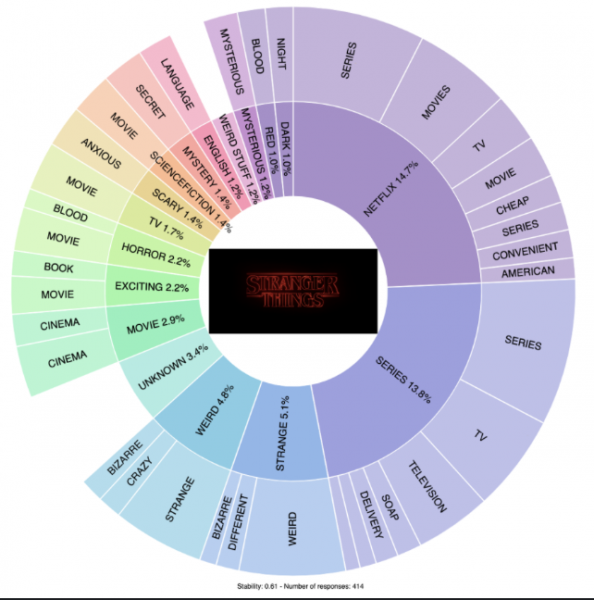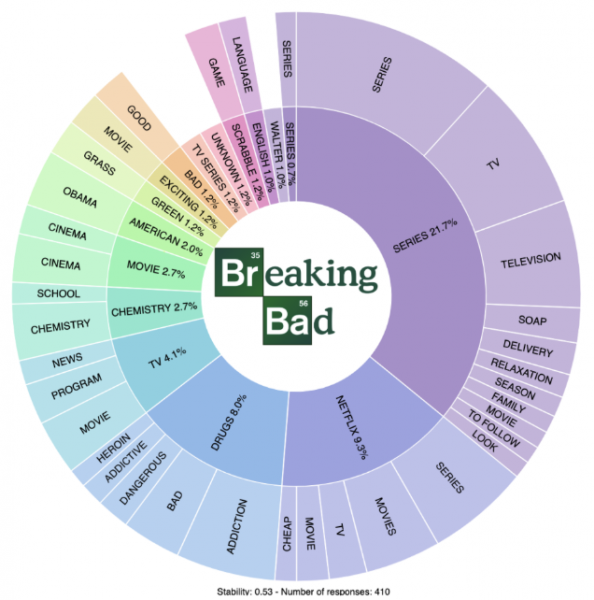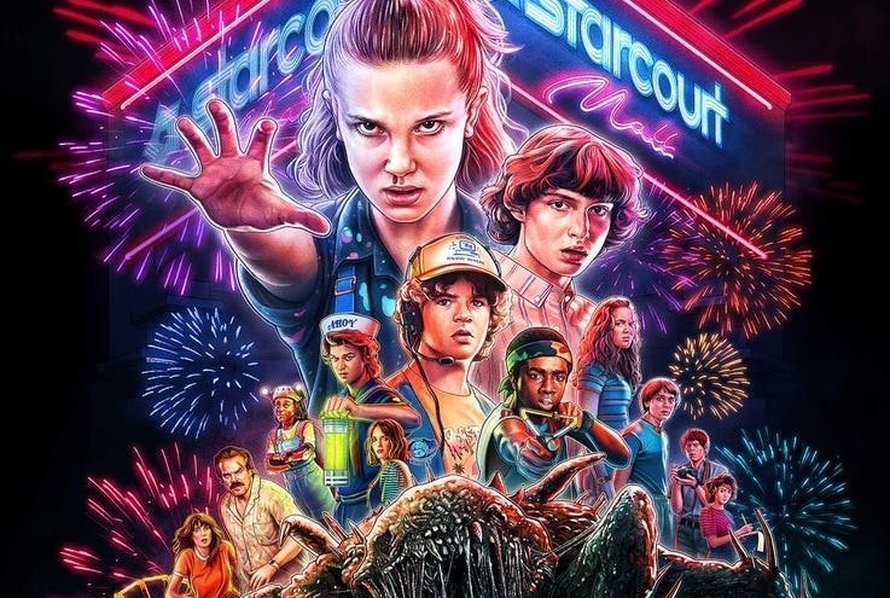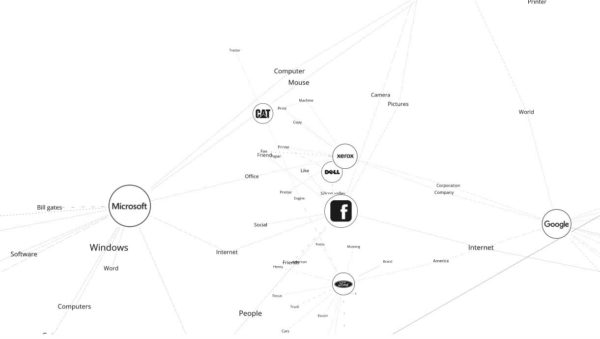STRANGER THINGS VS BREAKING BAD: HOW A NEURO-SEMANTIC AI CAN IMPROVE YOUR NEXT NETFLIX RECOMMENDATION
At Mindspeller, a KU Leuven AI spin-off, we like to help brands improve their consumers’ user experience (UX). Recently, we wondered how popular Netflix series such as Breaking Bad and Stranger Things compare in UX from a consumer neuroscience perspective. What are these iconic shows associated with and how could these associations improve your personal viewing recommendations? Could Mindspeller improve the way Netflix suggests your next recommendation? Let’s take a look at the data!
Using Mindspeller’s state-of-the-art neurometrics toolkit, we analyzed how we collectively perceive such shows and what exactly we associate with them on the subconscious level (which, according to consumer neuroscience, is ultimately driving our viewing choice). Do the shows’ similar ratings have a link? What do they have in common? And do they accurately predict viewership numbers?
The critic’s view
On July 4th this year, Netflix released the third season of Stranger Things; a highly popular science fiction and horror series. It attracted record viewership with 40 million accounts having watched the show in just the first weekend, rivaling other popular shows such as Breaking Bad, another hit piece about a chemistry teacher turned meth producer. Both shows have exceptional ratings: 8.8/10 for Stranger Things while Breaking Bad gets an astonishing 9.5/10 (IMDb).
The neuro-semantic approach
One of the latest tools Mindspeller recently developed is called the Association Wheel. An Association Wheel is a visual representation of top-of-mind associations rendered after positioning a brand in Mindspeller’s subconscious association network. This ‘neuro-positioning’ of a brand enables us to map and compare associations.


Let’s start with Breaking Bad’s Association Wheel. The strongest associations are category-related, such as ‘Series’, ‘Netflix’ and ‘TV’, meaning the brand has reached a point where we correctly allocate it to the right product category of a streaming TV show, available on Netflix.
The subconscious associations with ‘Drugs’ and ‘Chemistry’ are more interesting; perhaps not so surprising considering these are the subject of the show. Could the second-degree association under ‘Drug’ with ‘Addiction’, lead our autopilot brain to associate the show with the concept of ‘binge-watching’ (probably an association Netflix likes to see)?
Another interesting association is with the brand ‘Scrabble’. Some of us seem to associate the ‘Br’ and ‘Ba’ squares from the periodic table in the logo with pieces from a game of scrabble.
Despite its much shorter airtime (Breaking Bad is 8 years older than Stranger Things), Stranger Thingsalso shows strong product category-related associations, but in contrast to Breaking Bad, it seems to be more strongly associated with ‘Netflix’ than ‘Series’. Probably because the show is exclusive to Netflix while Breaking Bad first aired on AMC before streaming on Netflix.
Stranger Things is also associated with concepts such as ‘Strange’, ‘Weird’ and ‘Mysterious’, suggesting that people have adopted these intended associations with the show’s new cult. The show’s original spin on the science-fiction genre seems to be successfully contributing to the hype.
Subconsciously, we all seem to consider both shows ‘Exciting’ , though this association appears significantly stronger for Stranger Things.
The face-off: Breaking Bad vs. Stranger Things
So.. how do these new TV pop icons compare?
We assume that the producers of both shows set out to evoke certain intended associations with their shows that would subconsciously entice people to binge-watch them:
- Relaxation
- Exciting
- Funny
- Thrilling
- Mysterious
We therefore used our neuro-scientific toolkit to determine which show positioned its brand the closest to these intended associations (IAs). You can think of these IAs as a point or destination on Mindspeller’s neural map of subconscious associations. Mindspeller allows us to position any brand related asset on this map. This allows us to calculate the psychological distance to the brand’s IAs and even have our AI help compare and navigate various paths through which the brand can position itself closer to its desired destination. You can think of this as a GPS navigation system for a brand (re-)positioning.
We express association strength (or how close two objects on this map are to each other) with our MAS ( Mindspeller Association Score), a scale from 0 to 10. A MAS score higher than 3 already suggests a significant subconscious relationship between the two concepts. Scores higher than 7 are extraordinary.

Looking at the output of our neuro-positioning exercise, we see Stranger Things is the clear winner.Breaking Bad only comes close (but still loses) for the assumed intended association with ‘Netflix’. The distinction between the two is greatest for ‘Mysterious’. We can see that Breaking Bad is not considered to be either ‘Funny’, ‘Thrilling’ or ‘Mysterious’.
So, we conclude that the producers of Stranger Things were more successful in connecting with their audience when it comes to these assumed intended associations.
Which ranking is justified from a consumer neuroscience perspective?
According to our metrics, Stranger Things is a more popular show than Breaking Bad, while IMDb’s data suggests the opposite. But who is more accurate then?
Let’s compare our results to Netflix’s most popular KPI: the number of viewers a show gets. Breaking Bad’s season finale attracted 10.3 million live viewers, while 40 million Netflix accounts had Stranger Things’ third season in the first weekend alone. We’re not exactly comparing apples to apples here since the difference in cumulative airtime, but I think it’s safe to say Stranger Things had a larger viewership than Breaking Bad on its last release. This confirms our prediction that Stranger Things is the winner in this race!
In summary, Mindspeller’s new neuro-semantic AI can help Netflix better connect with the viewer and even predict future winners.
Can Mindspeller’s AI make Netflix’s recommendations more meaningful?
Netflix’s recommendation engine is based on collaborative filtering methods. This means that recommendations are likely based on your viewing history. The software then finds users who enjoyed the same shows and offers you suggestions for shows (which you have not seen yet), that these people liked. The logic goes that you will like things that people with a similar taste also liked. Note that the algorithm here doesn’t really know what it’s recommending. It seems a pretty crude system forfeiting an opportunity for a more personal connection.
With Mindspeller, we are able to position all sorts of marketing stimuli (even including fragrances!), but also TV shows or brands, in our semantic association network. The latter can be considered a representation of our collective subconscious, validated with neuroscience protocols. As such we can measure the psychological distance between these stimuli and various intended associations already positioned on the map. Our AI helps navigate our clients to move their brand closer to the intended associations, such as ‘Exciting’ or ‘Funny’. Once positioned in the map, Mindspeller can help recommend shows located in the same semantic region of our
In summary, Mindspeller’s new approach can easily enable online distribution services like Netflix to recommend personally relevant content to you. If you’re like us and can’t wait to discover the next winning series that really resonates with you, hit the like button and send us on our way to meet with Netflix 😉



